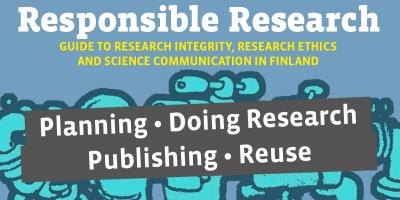
The customer in the open access supermarket often ends up paying the asking price. Mikael Laakso’s talk explains why your shopping cart is lacking a steering wheel.
-
Tiedosto
- Watch the whole talk on YouTube (subtitled)
Reviewed from the talk given by Mikael Laakso (Hanken): Open at any price? Reviewing short- and long-term implications of current forms of open access. Avoimen tieteen kevätpäivät, 5 May 2021.
Different costs
Since research is to a high degree conducted with money originating from public sources, logically the research outputs (articles) should also be publicly available. Laakso says that more open access (OA) is of course good, but it should nevertheless not be pursued at any cost – and costs do not refer just to monetary ones but also the implications that choices have on shaping the scholarly publishing landscape.
An important factor to remember when considering publications in the academic space is the intertwined nature of evaluation and publication in academia, where publication outlet rank is deeply entangled in academic merit systems and researchers face the pressure to publish their work in high-ranked journals. The story has two sides that need to be considered in tandem, bibliometric and economic, and one can talk neither pure money nor pure information science.
Big publishers run the show
OA can be achieved by different models: transformative agreements, full OA, or green OA. Transformative agreements are contracts negotiated between institutions and publishers. ‘Transformative agreement’ is an umbrella term that encompasses a continuum of contracts, ranging from traditional subscription licences that grant discounts in publication fees or vouchers to agreements allowing unlimited open access publication (see Borrego et al. 2020 Transformative agreements: Do they pave the way to open access? for further information).
In full OA or golden access model, OA is provided directly by the journals making all content of a journal freely available on the web immediately at time of publication. Green OA means that the authors post manuscript versions of their articles on the web, commonly in either subject-based or institutional repositories.
More transparency into the financial aspects of publishing is of benefit to everyone else other than publishers who seek financial gain by not making such information readily available. So far increased OA has not been less expensive than non-OA publishing as every year the prices paid for agreements with publishers keep increasing.
At the moment the five largest publishers (Elsevier, Wiley, Springer, Taylor & Francis, Sage) publish half of all scholarly articles and they account for an even larger share of the costs for libraries. Scarce resources to support alternative models are spread too thin. If the library budgets stay the same and we want to stick to these publishers, there are not many choices. The puzzle is in aligning individual as well as organisational goals and actions with science policy.
Help, my shopping cart has no steering wheel!
Laakso was using a vivid shopping cart analogy to demonstrate the OA funding system. Funding for OA can be either front-end funding or back-end funding. The frenzy to support OA through front-end funding (authors pay an APC i.e., article processing charge when publishing) has been strong, because it is easy to go to a supermarket where you have familiar products and can see all the prices, but convenience comes with a high price.
Paying for commercial publishers for hybrid OA solves immediate problems for some actors and it is a fast solution. But it is not a cheap solution, and you have no steering wheel in your shopping cart. Market control is not on the buyer’s side and pricing is not transparent. Each journal and thus publisher is essentially a monopoly.
It is easy to go to a supermarket where you can see all the prices, but it is not cheap and you have no steering wheel in your shopping cart
Commercial companies are out to increase profits and seek growth. To receive growth, they can either raise their prices or expand their business to new areas, for example to new disciplines. If Elsevier made all their journals full OA starting today, the APC would be around 4000 $, which is a huge barrier for publishing especially for researchers and institutions in lower income countries.
Commercial companies are out to increase profits and seek growth. To receive growth, they can either raise their prices or expand their business to new areas, for example to new disciplines. If Elsevier made all their journals full OA starting today, the APC would be around 4000 $, which is a huge barrier for publishing especially for researchers and institutions in lower income countries.
Rather than converting their existing journals to OA, big publishers are adding new OA journals to their selection. In practice this often happens by big publishers buying a small publisher or individual journal, which means that even more journals are moving from small to large publishers. Thus, the journal landscape continues to be entrenched and there is no control for what the prices among big commercial publishers will be in the future.
The need for new values
So, what can be done? Is the only way to “win” not to play the game? Laakso cites Dr. Leslie Chan (University of Toronto at Scarborough) who recently stated that there is a need for reframing: instead of framing scholarly communication in terms like “competition” and “market”, new values are needed. Things that should be supported, or “horses to bet on” are e.g., university presses and OA journal portals. For small journals it is difficult to develop and to keep up with the infrastructure, but collaboration through journal portals gives more muscle power.
Photo: Mitchell Luo / Unsplash


